Not sure how many cars you've actually repaired personally, but I've repaired many. The difference in repairing an ice car involved in a front end collision is that often you not only have radiator damage, but the engine itself was pushed back off it's mounts (or bending them and the frame) as part of the crumpling of the front of the car. Most cars these days are front-end drive meaning that the engine's backward movement was transmitted through the transmission to the front axle, causing more damage. With a Tesla, there is the cooling loop to the front radiator(s), but then you effectively have a crumple zone until you get to the front drive unit.
In the pictures the OP posted, the hood was pushed up and the front quarter panel was damaged and distorted. As I said in my post, it was not possible to tell whether or not there was significant frame damage or not, but it actually didn't look like that bad of a collision other than to body panels (acknowledging that the front radiator(s) and cooling loops would likely also be damaged and need replacement). It did not appear the damage extended to the drive unit/front axle. Hence my comment that, from the photos, this did not look like it was as bad of a front end collision as if somethgn similar happened in an ICE car. Part of the reason Teslas have such a high safety rating is the absence of that ICE motor in front...creating a much larger crumple zone to absorb impact energy.
The reason I bring up the rear impact I had was, because there is no engine in a Tesla, a rear or front impact is quite similar from not only a structural perspective, but also from an energy dissipation perspective.
With respect to your comment about a Camry, it almost certainly would be cheaper to fix -- the higher costs associated with bodywork on a Tesla are well known. But a Camry is also a much cheaper car and when an insurance company makes the decision to total or not to total, the decision is based on the cost to repair vs. the car's present value. It is literally a math formula for the insurance company. When the denominator is much smaller, the likelihood of a car being totaled goes up...but you knew that already, right?
Obviously you feel differently and you are certainly entitled to your opinion, but you haven't demonstrated/stated any sort of background or expertise that qualifies you to belittle my opinions or makes me inclined to change them based on what you have posted.
Not sure how many cars you've actually repaired personally, but I've repaired many. The difference in repairing an ice car involved in a front end collision is that often you not only have radiator damage, but the engine itself was pushed back off it's mounts (or bending them and the frame) as part of the crumpling of the front of the car. Most cars these days are front-end drive meaning that the engine's backward movement was transmitted through the transmission to the front axle, causing more damage. With a Tesla, there is the cooling loop to the front radiator(s), but then you effectively have a crumple zone until you get to the front drive unit.
In the pictures the OP posted, the hood was pushed up and the front quarter panel was damaged and distorted. As I said in my post, it was not possible to tell whether or not there was significant frame damage or not, but it actually didn't look like that bad of a collision other than to body panels (acknowledging that the front radiator(s) and cooling loops would likely also be damaged and need replacement). It did not appear the damage extended to the drive unit/front axle. Hence my comment that, from the photos, this did not look like it was as bad of a front end collision as if somethgn similar happened in an ICE car. Part of the reason Teslas have such a high safety rating is the absence of that ICE motor in front...creating a much larger crumple zone to absorb impact energy.
The reason I bring up the rear impact I had was, because there is no engine in a Tesla, a rear or front impact is quite similar from not only a structural perspective, but also from an energy dissipation perspective.
With respect to your comment about a Camry, it almost certainly would be cheaper to fix -- the higher costs associated with bodywork on a Tesla are well known. But a Camry is also a much cheaper car and when an insurance company makes the decision to total or not to total, the decision is based on the cost to repair vs. the car's present value. It is literally a math formula for the insurance company. When the denominator is much smaller, the likelihood of a car being totaled goes up...but you knew that already, right?
Obviously you feel differently and you are certainly entitled to your opinion, but you haven't demonstrated/stated any sort of background or expertise that qualifies you to belittle my opinions or makes me inclined to change them based on what you have posted.
Your response has a lot of words in it. I commend you. I get distracted watching sporting events.
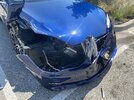 71D7AE54-EDA8-456C-A62F-29C29DD400D4.jpeg879.6 KB · Views: 262
71D7AE54-EDA8-456C-A62F-29C29DD400D4.jpeg879.6 KB · Views: 262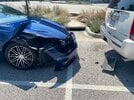 380583F9-0E65-4490-B127-3B9E38A765A0.jpeg1,006.2 KB · Views: 142
380583F9-0E65-4490-B127-3B9E38A765A0.jpeg1,006.2 KB · Views: 142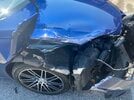 C5E345D6-84AD-4725-916F-2ED323C283AE.jpeg608.6 KB · Views: 154
C5E345D6-84AD-4725-916F-2ED323C283AE.jpeg608.6 KB · Views: 154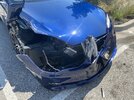 CAEA5145-5A39-40E7-AC5C-8B54D2F21184.jpeg879.6 KB · Views: 164
CAEA5145-5A39-40E7-AC5C-8B54D2F21184.jpeg879.6 KB · Views: 164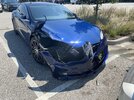 51D49A41-DF8B-475F-AC45-8948EB851FB1.jpeg953.8 KB · Views: 143
51D49A41-DF8B-475F-AC45-8948EB851FB1.jpeg953.8 KB · Views: 143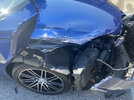 A6EDD4EE-4C9A-4F08-8236-97DC5211E3D1.jpeg687.1 KB · Views: 145
A6EDD4EE-4C9A-4F08-8236-97DC5211E3D1.jpeg687.1 KB · Views: 145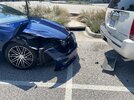 C387BCAF-989D-416B-82D6-8375EBEA9125.jpeg1,006.2 KB · Views: 141
C387BCAF-989D-416B-82D6-8375EBEA9125.jpeg1,006.2 KB · Views: 141

